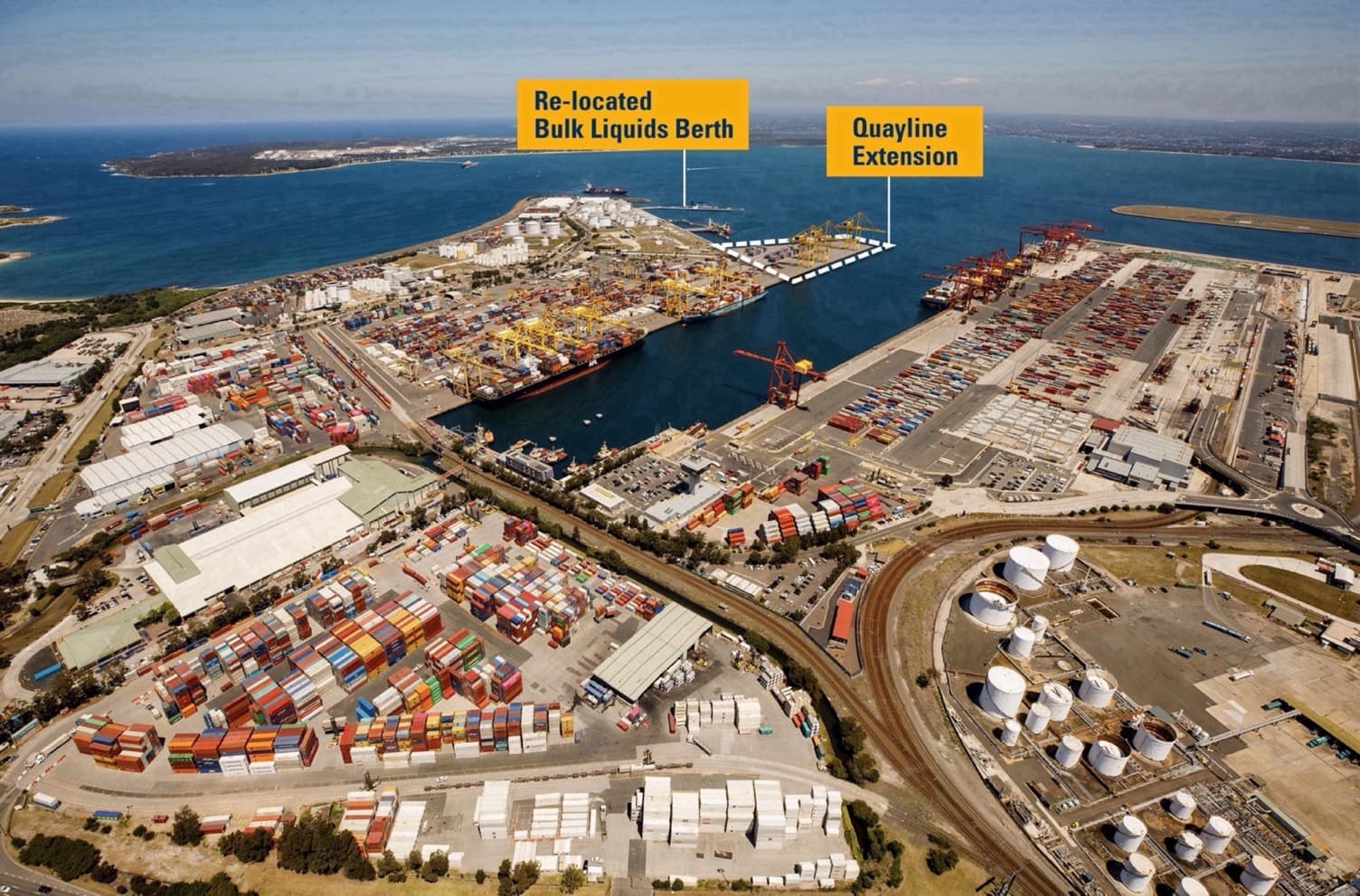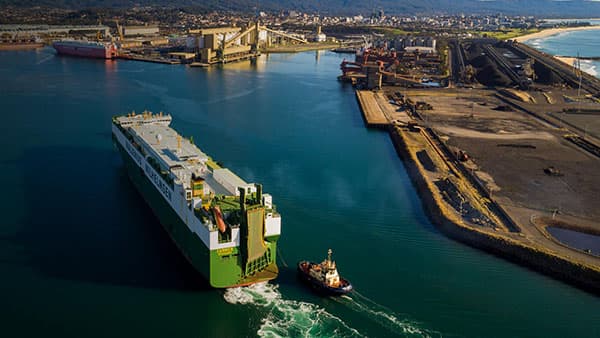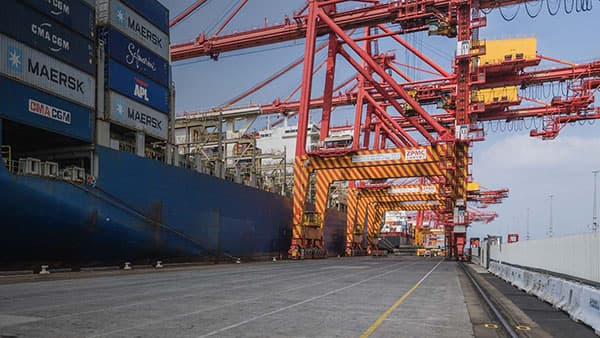The Quayline Equalisation Project will provide comparable quayline length for each container stevedore company operating at Port Botany.
The investment in additional quayline will ensure Port Botany, which is NSW’s container port, can continue to efficiently meet the trade needs of NSW. This project will mean all three container terminals have the capability to berth three longer container vessels at the same time, improving port operations.
The Project includes extending the southern quay of Brotherson Dock by 314 metres, with adjoining hardstand area to enable ships to be loaded and unloaded.
In order to extend the quayline, NSW Ports will be relocating Bulk Liquids Berth 1 to the south of Bulk Liquids Berth 2.

An artist’s impression of the project once completed.
Why is the project needed?
Today, two of Port Botany’s container terminals can berth three longer vessels, while the third container terminal can only berth two.
Ship sizes will continue to grow to provide more cost-effective shipping services, therefore, port infrastructure needs to adapt to this changing need.
Previous Community Consultation
NSW Ports has engaged with the community throughout the planning process, including through the long-standing Port Botany Community Consultation Committee and broader public consultation.
This included in-person community drop-in sessions, a community survey and webinars.
The Planning Process
The Project is State Significant Infrastructure. NSW Ports submitted a request for Secretary's Environmental Assessment Requirements (SEARs) in January 2025.
The SEARs were provided by the NSW Department of Planning, Housing and Infrastructure and NSW Ports was required to consider the SEARs in preparing an Environmental Impact Statement (EIS) for the project.
The EIS is on exhibition from 24 September 2025 via the NSW Department of Planning, Housing and Infrastructure.
As part of this process, members of the public have an opportunity to make submissions. This must be made to DPHI on the Major Project Planning Portal.
To make a submission or learn more about the project, please visit https://www.planningportal.nsw.gov.au/major-projects/projects/port-botany-quayline-equalisation
You can also stay up to date on the Project via this web page.



